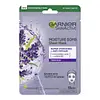What's inside
What's inside
 Key Ingredients
Key Ingredients

 Benefits
Benefits

 Concerns
Concerns

 Ingredients Side-by-side
Ingredients Side-by-side

Water
Skin ConditioningGlycerin
HumectantDipropylene Glycol
HumectantHydrolyzed Collagen
EmollientHydroxyacetophenone
AntioxidantPolyglyceryl-10 Laurate
Skin ConditioningArginine
MaskingCarbomer
Emulsion StabilisingPolyglyceryl-4 Laurate
EmulsifyingAllantoin
Skin ConditioningAdenosine
Skin ConditioningCaprylyl/Capryl Glucoside
CleansingButylene Glycol
HumectantParfum
MaskingHydroxyethylcellulose
Emulsion StabilisingCaprylyl Glycol
Emollient1,2-Hexanediol
Skin ConditioningCollagen Extract
Skin ConditioningSoluble Collagen
HumectantDisodium EDTA
Ethylhexylglycerin
Skin ConditioningCopper Tripeptide-1
Skin ConditioningHexapeptide-11
Skin ConditioningHexapeptide-9
Skin ConditioningPalmitoyl Pentapeptide-4
Skin ConditioningPalmitoyl Tripeptide-1
Skin ConditioningTripeptide-1
Skin ConditioningWater, Glycerin, Dipropylene Glycol, Hydrolyzed Collagen, Hydroxyacetophenone, Polyglyceryl-10 Laurate, Arginine, Carbomer, Polyglyceryl-4 Laurate, Allantoin, Adenosine, Caprylyl/Capryl Glucoside, Butylene Glycol, Parfum, Hydroxyethylcellulose, Caprylyl Glycol, 1,2-Hexanediol, Collagen Extract, Soluble Collagen, Disodium EDTA, Ethylhexylglycerin, Copper Tripeptide-1, Hexapeptide-11, Hexapeptide-9, Palmitoyl Pentapeptide-4, Palmitoyl Tripeptide-1, Tripeptide-1
Water
Skin ConditioningPropylene Glycol
HumectantGlycerin
HumectantDipotassium Glycyrrhizate
HumectantGlyceryl Acrylate/Acrylic Acid Copolymer
HumectantHydrogenated Starch Hydrolysate
HumectantHydroxyacetophenone
AntioxidantHydroxyethylcellulose
Emulsion StabilisingLavandula Hybrida Oil
EmollientLimonene
PerfumingMannose
HumectantP-Anisic Acid
MaskingPEG-40 Hydrogenated Castor Oil
EmulsifyingPhenoxyethanol
PreservativePotassium Hydroxide
BufferingPvm/Ma Copolymer
Emulsion StabilisingSodium Hyaluronate
HumectantXanthan Gum
EmulsifyingParfum
MaskingWater, Propylene Glycol, Glycerin, Dipotassium Glycyrrhizate, Glyceryl Acrylate/Acrylic Acid Copolymer, Hydrogenated Starch Hydrolysate, Hydroxyacetophenone, Hydroxyethylcellulose, Lavandula Hybrida Oil, Limonene, Mannose, P-Anisic Acid, PEG-40 Hydrogenated Castor Oil, Phenoxyethanol, Potassium Hydroxide, Pvm/Ma Copolymer, Sodium Hyaluronate, Xanthan Gum, Parfum
 Reviews
Reviews

Ingredients Explained
These ingredients are found in both products.
Ingredients higher up in an ingredient list are typically present in a larger amount.
Glycerin is already naturally found in your skin. It helps moisturize and protect your skin.
A study from 2016 found glycerin to be more effective as a humectant than AHAs and hyaluronic acid.
As a humectant, it helps the skin stay hydrated by pulling moisture to your skin. The low molecular weight of glycerin allows it to pull moisture into the deeper layers of your skin.
Hydrated skin improves your skin barrier; Your skin barrier helps protect against irritants and bacteria.
Glycerin has also been found to have antimicrobial and antiviral properties. Due to these properties, glycerin is often used in wound and burn treatments.
In cosmetics, glycerin is usually derived from plants such as soybean or palm. However, it can also be sourced from animals, such as tallow or animal fat.
This ingredient is organic, colorless, odorless, and non-toxic.
Glycerin is the name for this ingredient in American English. British English uses Glycerol/Glycerine.
Learn more about GlycerinHydroxyacetophenone is antioxidant with skin conditioning and soothing properties. It also boosts the efficiency of preservatives.
This ingredient is not irritating or sensitizing.
Hydroxyethylcellulose is used to improve the texture of products. It is created from a chemical reaction involving ethylene oxide and alkali-cellulose. Cellulose is a sugar found in plant cell walls and help give plants structure.
This ingredient helps stabilize products by preventing ingredients from separating. It can also help thicken the texture of a product.
This ingredient can also be found in pill medicines to help our bodies digest other ingredients.
Learn more about HydroxyethylcelluloseParfum is a catch-all term for an ingredient or more that is used to give a scent to products.
Also called "fragrance", this ingredient can be a blend of hundreds of chemicals or plant oils. This means every product with "fragrance" or "parfum" in the ingredients list is a different mixture.
For instance, Habanolide is a proprietary trade name for a specific aroma chemical. When used as a fragrance ingredient in cosmetics, most aroma chemicals fall under the broad labeling category of “FRAGRANCE” or “PARFUM” according to EU and US regulations.
The term 'parfum' or 'fragrance' is not regulated in many countries. In many cases, it is up to the brand to define this term.
For instance, many brands choose to label themselves as "fragrance-free" because they are not using synthetic fragrances. However, their products may still contain ingredients such as essential oils that are considered a fragrance by INCI standards.
One example is Calendula flower extract. Calendula is an essential oil that still imparts a scent or 'fragrance'.
Depending on the blend, the ingredients in the mixture can cause allergies and sensitivities on the skin. Some ingredients that are known EU allergens include linalool and citronellol.
Parfum can also be used to mask or cover an unpleasant scent.
The bottom line is: not all fragrances/parfum/ingredients are created equally. If you are worried about fragrances, we recommend taking a closer look at an ingredient. And of course, we always recommend speaking with a professional.
Learn more about ParfumWater. It's the most common cosmetic ingredient of all. You'll usually see it at the top of ingredient lists, meaning that it makes up the largest part of the product.
So why is it so popular? Water most often acts as a solvent - this means that it helps dissolve other ingredients into the formulation.
You'll also recognize water as that liquid we all need to stay alive. If you see this, drink a glass of water. Stay hydrated!
Learn more about Water